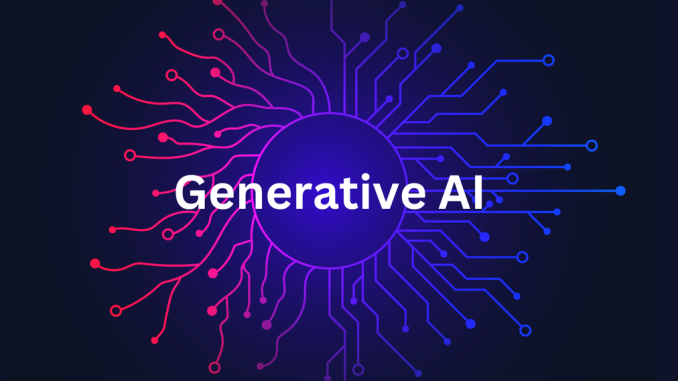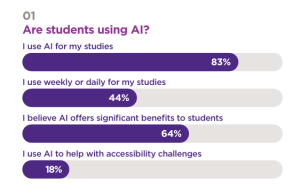
Growing gap between policy and reality
In Australian universities, generative AI tools have quietly become part of students’ academic lives. A survey conducted at four Australian universities found that 83% of students use AI for learning, yet only 32% think their universities provided enough guidance on its appropriate use.

The gap between student adoption and institutional support echoes the researchers’ observation that Australian universities are struggling to keep up with the rapid development of AI, as only 36 % of universities have an AI policy in place 100 days after ChatGPT’s launch.
Due to the lack of a clear policy, some universities have reverted to traditional assessments to try to avoid the challenges posed by AI. As reported by The Guardian, the University of South Australia reintroduced face-to-face oral exams, but was ultimately criticized for disadvantaging non-native speakers and shy students.
What is clear is that these measures sidestep the reality that AI is reshaping the way students learn. Instead, universities must integrate AI into education through thoughtful strategies to prepare students for future learning and work.
Why banning generative AI is not the solution?
Technical: Bans are difficult to enforce
Generative AI tools are now embedded in students’ academic lives, making it difficult to limit or ban their use in assessments. In a recent survey, 40% of students admitted to using AI in assessments, even though they knew it was not allowed.
Kepler Fu, a graduate student at the University of Sydney, shared that one of her courses replaced recorded presentation assessment with face-to-face oral Q&A in order to limit the use of AI. “It pushes us to think more on our own,” she said,
“but some people are still using it secretly. AI is just too convenient, but banning it doesn’t really stop it, it just changes how people use it.”
Another reason is that AI detection tools have been criticized for their lack of reliability and transparency, and their results are not sufficient to support disciplinary action. This makes it difficult for universities to completely ban AI. Without reliable tools, universities risk not being able to enforce their rules.
Academic: Bans limit educational innovation
Instead of solving the problem of abuse, the banning of generative AI in Australian universities will severely limit meaningful educational innovation. One major consequence is the lost opportunity to reform the teaching model of higher education. A report by Times Higher Education suggests that AI could assist with time-consuming tasks such as writing code or transcribing interviews, allowing higher education staff to focus on higher-value teaching activities.
The Australian Framework for Generative Artificial Intelligence in Schools (Framework), released by the Australian Department of Education, further states that educators can use generative AI to support and enhance teaching, for the benefit of students, schools and the community. Therefore, a complete ban on AI tools could slow down educational progress and widen the equity gap in higher education.
The educational value of AI
One of the key advantages of integrating generative AI into education is its ability to enhance students’ critical thinking and self-directed learning. A recent study found that when students are asked to compare AI-generated answers to human-written answers, they actively think about their accuracy and potential biases. This type of task not only enhances students’ critical thinking, but also improves their AI academic literacy.
Yaru He, an assistant professor who graduated from USYD and is currently working in the Computer Science program at the University of Nottingham Ningbo China (UNNC), was interviewed. She said she has begun experimenting with teaching students how to use AI tools critically as well as ethically in classroom activities at UNNC.
In addition, AI tools can help bridge the learning resource gap. The above study also found that students felt that generative AI could help them organize and explain complex concepts. This not only greatly reduces the difficulty of the coursework but also allows them to acquire additional knowledge that is more challenging.
Especially for regional, indigenous and disabled students, who are in resource-poor environments, equitable access to AI tools means that they are able to receive comparable learning support and opportunities to other students, thus helping to narrow the education gap.
What universities should do?
As generative AI becomes a lasting presence in academic life, universities must shift from banning its use to designing meaningful engagements with it. The following are several practical steps that can help universities embrace AI in an ethical and inclusive way:
- Establish clear policies: The above survey showed 91% of students were concerned that using AI would break the rules. Therefore, clarifying the policy will not only reduce students’ anxiety and fear, but also provide them with clear guidelines for action, making the use of AI tools more directional and educational.
- Redesign assessments around responsible AI use: The purpose of assessment is to evaluate whether students have mastered the knowledge, not whether they have used AI. Thus, universities should aim to integrate AI into traditional classroom activities and assessments. Test students’ true understanding of the material while allowing for ethical and honest use of AI.
Source: Video from YouTube, Oliver Kele’s talk on how to design universities for the age of AI
- Include student voices: As emphasized in the video above, universities should ask students for their perspectives through surveys or group discussions to promote fairness and inclusion of AI policies.
These steps can help guide fair use of AI and ease student concerns. Preparing students for a changing digital world and an AI-driven future.
Education must evolve with AI
Redesigning Australian higher education for the age of AI is not easy, but it is an imperative.
Embracing generative AI is not about abandoning academic standards, it is about evolving them. By designing policies and assessments that are fair, forward-thinking, and reflect the realities of modern learning, universities can facilitate inclusion, integrity, and innovation.
Decisions made today will affect how an entire generation learns, thinks and prepares for the future. The time to act is now.
If you have any thoughts, feel free to share them in the comments.




Be the first to comment